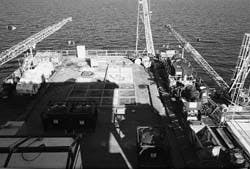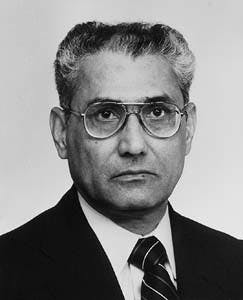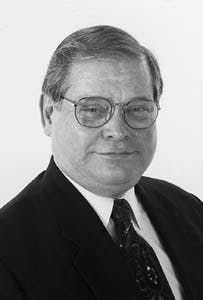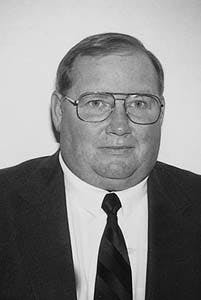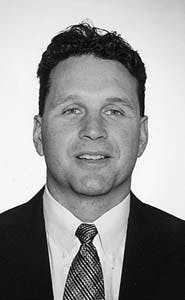Process, optimized acidizing reduce production facility upsets
Syed A. AliThe filtration/absorption process, coupled with optimum treatments, prevent facility upsets that increase the time and resources required for bringing a well back on-line following an acid stimulation.
Chevron U.S.A. Production Co.
New Orleans
Donald G. Hill
Schlumberger Dowell
Tulsa
S. Bruce McConnell
Schlumberger Dowell
Houston
Michael R. Johnson
Gulf States Environmental Solutions Inc.
Houston
Surface active agents, required in acidizing to improve well productivity, can form oil/water emulsions and cause unacceptable oil and grease levels during acid flowback. But recent offshore experiences after acidizing show that operators can achieve oil and grease discharge limits without facility upsets.
To minimize oil and grease, the additives need to be optimized by adding a mutual breakout solvent (MBS). MBS has the dual function of being a mutual solvent and a sludge and emulsion control additive.
Also, the filtration/absorption process can remove residual emulsified oil and surface active agents from acid flowback fluids in a single pass. The process is applicable for fluids with an acidic pH containing up to 3% HCl acid.
Acidizing problems
Matrix sandstone acidizing improves near well bore flow efficiency by removing skin. Although advances in acidizing chemistry have improved success rates,1 the problems associated with handling acid flowbacks deter many engineers from acidizing.
Frequent surface treating facility upsets occur because of commingling main production streams with acid flowback. This flowback can increase oil and grease content in discharged water and bs&w content in dehydrated crude.2
Flowback-induced emulsions are difficult to treat chemically, and require a long residence time to separate. Stability of oil/water emulsions can be attributed to several factors such as:2 3
- Naturally occurring surfactants in crude oil
- Oil-wet solids (corrosion and scale compounds and formation fines)
- Precipitated solids (acidizing byproducts)
- Ferric ion interaction with asphaltenes
- Acidity of return fluids
- Acidizing additives such as surfactants, corrosion inhibitors, and mutual solvents.
Typically, acidizing fluid may spend in the formation to a pH of 2-5; however, return fluid may contain 2-3% residual acids. This will not only release natural surfactants from crude oil, but will also affect the stability of the micelles formed. Experience shows that emulsion problems disappear when return fluid pH reaches 6.
Produced solids such as formation fines and corrosion byproducts can stabilize emulsions. In addition, solids can be generated by the interaction of acidizing fluid with the rock matrix or when the return acid mixes with the co-produced fluids, resulting in precipitation of incompatible species.3
Other emulsion stabilization mechanisms may include organic deposits and iron present in the returned fluid. Ferric ion interaction with the asphaltene component of crude oil produces a sludge that forms a protective layer around the discontinuous oil phase.
Additives in the acidizing fluid affect such properties as corrosion inhibition, dispersion, and wettability. If excessive concentrations are added, the additives may enhance fluid emulsification during flowback.
In recent years, the industry has realized that acid flowback impacts offshore discharged water quality and has the potential for interrupting production. Also, the implementation of the new EPA (U.S. Environmental Protection Agency) overboard discharge limits has caused operators to re-evaluate acid flowback treatment design and processing. Npdes (National Pollution Discharge Eliminations System) requires monthly discharge levels to average less than 29 mg/l.
Several field and laboratory studies developed approaches for minimizing acid flowback impact on discharged water quality. Results suggested that additive optimization had a minimum threshold concentration before acidizing effectiveness was sacrificed.
Acidizing fluid additives are water soluble or water dispersible and, as a result, they partition into water and oil phases. Consequently, the water-soluble additives may appear in the water phase of the separation system and add to the total oil and grease concentration.
Additives also may increase the stability of oil emulsified in the water (oil/water emulsion).
Acid additives
Much work has been done in modifying conventional acidizing procedures to minimize their impact on crude demulsification. Although, these fluids also strongly affect produced water treating processes, there is very little published documentation of such effects.
Recently, Bansal4 presented bench-model flotation cell field test results on various chemicals normally present in stimulation, workover, and completion fluids. Bansal's data clearly show that some typical organic acidizing additives, such as surfactants and mutual solvents, affect separation efficiency in a flotation cell.
In concert with Kris Bansal of Conoco Inc., an oil and grease laboratory testing program evaluated various stimulation additives blended with synthetic seawater. Gravimetric procedures determined the oil and grease content. The program's objective was to determine which additives adversely affect the oil and grease gravimetric analysis. It should be noted that the testing was done without the addition of crude oil.
As shown in Table 1 [25652 bytes], selective additives may be extracted from the aqueous brine with freon and adversely affect the oil and grease results.
Additional laboratory studies were completed with a bench-model flotation cell to evaluate the potential emulsification of produced oil in synthetic seawater when 2% of a treating fluid (containing typically used additives for acid stimulation) is mixed in the brine. Table 2 [19037 bytes] shows the dramatic increase in the observed oil and grease content. This indicates an increased content of emulsified oil.
Production chemicals can control demulsification of the oil-in-water emulsion during normal production; however, the residual surfactant additives present during acid flowback can increase the emulsion stability and upset production facilities if the produced fluids are allowed to commingle with the production from other wells.
These emulsions are difficult to break. Production operation demulsifiers are not cost effective for controlling acid flowback emulsions. Other handling procedures are required.
Handling options
Operators generally produce acid flowbacks into a test separator or a holding tank until the fluid pH approaches 6. At that time, operators will commingle the flowback with the main production stream. Khatib, et al.,2 presented several options for handling return fluids stored in holding tanks.
These options include:
- Producing acid flowbacks into a tank on the platform or onto a barge and transporting them to shore for subsequent disposal
- Injecting fluids above fracture pressure in a designated disposal well
- Neutralizing and/or demulsifying the fluids before introducing them, at a controlled rate, to the main production stream
- Pumping the fluids directly into the treating facilities.
Most of these options require separate holding tanks or vessels for separating oil from the oily water. This process can take from a few days to weeks to bring a well to full production without causing upsets in the facilities. Also, well stimulations need to be evenly spaced over time to minimize acid flowback impact on the processing equipment.
Case history
The Main Pass A field was the site of a study to develop a novel approach for handling acid flowback without upsetting the facilities. This field has a history of facility upsets following acid jobs.
Testing procedures
An on-site laboratory model Wemco unit was employed for preliminary evaluation of all additive packages. On-site samples of oil field brine and oil from the Main Pass field were collected from the downstream side of the Wemco and used for testing.
For evaluating the oil-in-water emulsification tendencies, 3,000 ml of brine were added to the mixing container for the Wemco unit. The desired volume of treating acid or brine, containing the desired additives, was added while mixing at 25-30,000 rpm with moderate aeration. The required treating fluid volume was determined by the total additive concentration in the treating fluid.
Chemical additive concentrations in the tests ranged from 500 to 5,000 ppm of additive. While mixing, the desired quantity of oil (300-2,000 ppm) was added. The total mixing time to achieve emulsification with the oil was 1 min.
Samples were immediately collected and observed for clarity before being submitted to a testing laboratory for determination of oil and grease content by the Npdes test protocol.5
On-Site sampling
One-liter samples were randomly taken on all jobs following the 120-bbl oil/water separator (influent) and following the observation vessel prior to discharge (effluent). These samples were sent to a testing laboratory for gravimetric, gravimetric silica, and infrared analysis for oil and grease content.
These were non-protocol (therefore, non-EPA) samples, because no acid was added to the sample bottles. To test the immediate water quality going overboard, random infrared analyses of oil and grease were also completed on-site as the water was being discharged.
One protocol EPA sample was taken from the water being discharged overboard from each platform during the filtration procedures.
In addition, one static sheen test was run daily during each job. The bs&w samples were randomly taken from the wellhead and from oil being sent to the sales line. A Corning pH meter measured the pH of random influent and effluent samples during the job. Water temperatures were also recorded at this time.
Previous design
Downhole emulsions can be attributed to inadequate prejob compatibility testing. Ali, et al.,6 recommended a test procedure in which the formulated acid, containing inhibitors, surfactants and nonemulsifiers, is filtered through a sandpack.
This procedure simulates the acid filtration system within the rock matrix during the spending process. Surfactants, such as those formulated into corrosion inhibitors and non-emulsifiers, are absorbed onto mineral surfaces. This absorption minimizes available surfactants in solution for preventing downhole emulsions.6
The procedure identifies potential oil/water emulsions and establishes optimum additive concentrations for preventing emulsions under simulated reservoir conditions. Although previous acid job designs (Table 3 [75337 bytes]) were optimized with the sandpack tests, serious facility upsets were still encountered after the acidizing.
Previous flowback
The flowback following the previous acid treatment design (Table 3) resulted in no oil external phase emulsions; however, the aqueous phase appeared very dark in color, indicating high concentrations of emulsified oil in water. The oil and grease content of the aqueous phase collected at the wellhead also was dramatically higher than the acceptable limit (Fig. 1 [12927 bytes]).
Samples collected within the first 3 days were greater than 2,000 ppm oil and grease, peaking at 8,300 ppm. Even after 1 month, the oil and grease content remained greater than 500 ppm. During this time, the treatment required collection of the returned aqueous fluid. The emulsified oil was allowed to separate before the aqueous phase could be blended into the aqueous stream from other producing wells.
Even after blending with other produced brines and heat treating, the samples collected after passing through the Wemco phase-separation unit exhibited oil and grease content that was greater than 100 ppm and 50 ppm for 10 days and 30 days, respectively, after the acid job (Fig. 2 [15888 bytes]). After separating the oil, it was gradually fed to the LACT (lease automatic custody transfer) unit without significant bs&w problems.
Analyses of previous acidizing flowback did not indicate any unusual composition in the returned fluid that may have contributed to the emulsion stability. The returned fluid had an acidic pH and typically contained 1-2% acid with occasional spikes of 3%. The fluid composition was analyzed for various metal ions, including calcium, magnesium, aluminum, and iron (Fig. 3 [25220 bytes]).
No unusual trends or excessive ions were observed. Therefore, more emphasis was placed on the visual determination of oil and grease for evaluating the returned fluids.
Novel approach
To overcome the oil treating problems and avoid deferred production, a novel approach combined the benefits of treatment optimization with a new absorption/filtration process. This approach proved to be cost-effective for handling acid flowbacks.
Bansal4 and Durham, et al.,7 recommended an on-site fluid/chemical compatibility test for optimizing surface treating chemicals during acid flowbacks. The simulation of the mixed produced oil and brine with returned fluids during flowback can be evaluated by an on-site laboratory Wemco phase-separation unit.
A blend of produced oil and brine with 1% of the recommended acid system (containing corrosion inhibitor, mutual solvent, non-emulsifier, and other additives) may form oil/water emulsions. Brine phase clarity can be a good approximation of brine discharge quality.
Oil and grease analysis determines the quantity of emulsified oil in the brine. This emulsion can also be tested with various emulsion breakers and water clarifiers to select and optimize their concentrations for effectively treating the resultant fluid.
Absorption media
Filtration with specialized absorption media can remove emulsified oil and water-soluble organic products from the aqueous phase prior to discharge overboard. The absorption media is a proprietary granular material called "Crudesorb" and is specifically designed for removing oil and grease from extremely low-pH aqueous streams. The product and process are patented.7
The absorption/filtration media are formulated to withstand methanol, and hydrofluoric, sulfuric, acetic, and hydrochloric acids. It effectively removes free, emulsified, and dissolved organics that are sparingly water soluble.
The filter media has a very short mass transfer zone and can absorb up to 71% of its own weight in hydrocarbons. Because of its high BTU value, the media can be disposed of as normal oil field waste in the cutting box or incinerated.
Filtration equipment
The filtration process preferably begins by initially isolating acid returns into a two or three-phase test separator. The acid returns can also be collected directly from the wellhead.
The acid returns are pumped into a four-compartment, 120-bbl tank with weirs to help control and separate the liquid phases (Fig. 4 [24219 bytes]). After phase separation, the clean oil is pumped into the oil processing facilities.
The hydrocarbon-contaminated aqueous phase is pumped through a 25-50 m bag filter to remove any suspended solids. The effluent then passes through two vessels loaded with absorption media to remove hydrocarbon and acid additives. In the next step, the fluid passes through another vessel containing granular activated carbon that removes any components not eliminated by the absorption media.
The last vessel in the process is a 175-gal drum that allows visual observation of the fluids, sampling, and recycling of the flow, if necessary. Once regulatory oil and grease limits are met, the effluent can be discharged overboard. The equipment requires minimal space on the platform (Fig. 5 - below).
The filtration/absorption equipment takes up only a relatively small space on the platform (Fig. 5).
Treatment optimization
Previous acid designs contained a wide range of chemical additives. These additives provided corrosion inhibition, and control of emulsion, iron, and sludge while the treating fluid removed formation damage and restored production.
As noted by Bansal,4 surfactants and mutual solvents are the primary additives contributing to emulsion problems during acid flowback. Consequently, an optimized acid treatment minimizes the acid additive impact on the emulsified oil in the aqueous phase during the acid flowback.
In the optimized treatment (Table 3) the corrosion inhibitor concentration was minimized and the mutual solvent (MS) was replaced with a mutual breakout solvent (MBS). In addition, a non-emulsifier was not required with the MBS, and MBS concentration was also minimized.
The optimized treatment drastically reduced the number and concentration of additives, such as surfactants, and mutual solvents. Recommended treatment concentrations were based on laboratory testing with the sandpack5 method and on-site testing with the laboratory Wemco unit.7
Acid flowback
Rapid phase separation was experienced by the oil and brine fluids collected at the wellhead from the acid flowback after the optimized treatment. The brine appeared almost clear, a dramatic improvement in emulsified oil.
But the oil and grease content of the aqueous phase collected at the wellhead was still higher than the acceptable limit (Table 4 [10907 bytes]). Based on this design, the oil and grease quantity decreased but not enough to be below 29 mg/l.
These studies clearly show that the acid flowback from the subsequent treatments exhibited less emulsified oil in water. The emulsified oil in the brine appeared dramatically reduced.
From preliminary testing, however, acceptable levels of emulsified oil in brine were not assured; therefore, provisions for filtration/absorption were employed. The filtration/absorption removes the excess oil and acidizing additives, the source of the emulsified oil.
The oil and grease content of brine samples collected prior to filtration (influent) quantified the oil content. In addition, samples were collected following the filtration unit (effluent). As shown in Table 4, the oil and grease content of the influent was dramatically less than observed in the previous design but still above the acceptable 29 mg/l. limit.
Following filtration, the observed oil and grease level decreased dramatically. It was significantly below acceptable limits and could be discharged overboard.
Although the optimized treatment design was beneficial, additional filtration was required to reach the mandatory goal of 29 mg/l. Filtration technology is attractive because the method is simple and sequential filtration requires minimum space on the platform.
Filtration/absorption
The acid flowback from the optimized treatment was collected from the test separator and pumped into a 120-bbl separation tank (Fig. 4).
Following phase separation, the free crude oil was pumped with a high-pressure pump into the sales line. The aqueous fluids containing the spent acid and emulsified oil were pumped at 0.5-1.0 bbl/min through a dual filter to remove suspended solids. The wastewater was then pumped through a vessel containing filter media to remove hydrocarbons and additives that may show up in tests as oil and grease.
A second vessel containing absorption media (Crudesorb) prevented downtime when spent media were changed out. As a precaution, a vessel with granular activated carbon (GAC) following the filter media ensured absorption of the more difficult to absorb organic products.
The last vessel in the treatment train was a 175-gal observation drum that allowed sampling and recycling of the finished water, if necessary. At this point, the treated water met effluent limits (Table 4) and was discharged overboard below the water surface.
Table 5 [87667 bytes] summarizes additional oil and grease data from Chevron and non-Chevron jobs.
Costs, benefits
When all costs are considered, absorbent technology is the most cost-effective alternative for eliminating problems associated with acid flowback. Based on case studies, acid flowback treating cost ranges from $4.50 to 17.50/bbl, depending on flowback fluid volume.
In addition, absorption media disposal cost ranges from $8 to 12/bbl. With absorption media, the production from the platform may continue without interruption, thus reducing operating costs.
Acid flowback fluids are easily monitored to ensure that production from the treated well is brought on stream as quickly as possible. Water may be discharged and the oil is mixed with the platform's production.
The new procedure eliminates the current practices of slow and timely metering of the emulsified oil and water mixture into the platform production or transporting flowback waste for injection into disposal wells.
Additive optimization reduces treating costs of the acid flowback fluids. The more additives employed, the more surfactants are in the flowback and, subsequently, more emulsified oil must be removed to obtain acceptable oil and grease values.
Although absorbent material can retain up to 70% of its weight in oil and treating additives, frequent absorbent material replacement may be required to maintain efficiency and achieve an acceptable discharge. Thus, the cost required for an acceptable discharge is directly proportional to the quantity of emulsified oil in the acid flowback.
Acknowledgment
We thank Kris Bansal, Conoco Inc., for sharing with us his time and experience during preparation or this article.
References
1. Gdanski, R.D., "Fluosilicate Solubilities Affect HF Acid Compositions," SPE Production and Facilities Symposium, November 1994.
2. Khatib, Z.I., Faucher, M.S., and Sellman, E.L., "Field Evaluation of Disc-Stack Centrifuges for Separating Oil/Water Emulsions on Offshore Platforms," Paper No. SPE 3067. SPE Annual Technical Conference, Dallas, Oct. 22-25, 1995.
3. Coppel, C.P., "Factors Causing Emulsion Upsets in Surface Facilities Following Acid Stimulation," JPT, September 1975, pp. 1060-66.
4. Bansel, K.M., "Effect of Non-produced Fluids on Produced Water Treatment Equipment Efficiency," Paper NO. SPE 25199, SPE Symposium on Oil field Chemistry, New Orleans, March 1993.
5. Ali, S.A., Durham, D.K., and Elphingstone, E.A., "Testing identifies acidizing fluid/crude compatibility problems," OGJ, Mar. 28, 1994, pp. 47-51.
6. National Pollutant Discharge Elimination System (NPDES) Method 413.1, "Oil and Grease, Total Recoverables (Gravimetric, Separatory Funnel Extraction)."
7. Durham, D.K., Ali, S.A., and Stone, P.J., "Causes and Solutions to Surface Facilities Upsets Following Acid Stimulation in the Gulf of Mexico," Paper No. SPE 29528, SPE Production Operations Symposium, Oklahoma City, April 1995.
8. Beall, G.W., "Method of Removing Water-Insoluble Organic Contaminants from an Acidic Aqueous Stream," U. S. Patent 5,567,318, Oct. 22, 1996.
The Authors
Syed A. Ali is technical advisor for Chevron U.S.A. Production Co., New Orleans. He specializes in sandstone acidizing, formation damage control, rock-fluid interaction, mineralogy, and oil field chemistry. Ali has an MS from Ohio State University and a Phd from Rensselaer Polytechnic Institute.
Donald G. Hill is a senior research engineer with Schlumberger Dowell in Tulsa. His main areas of interest and research are matrix acidizing, emulsion/sludge control, and corrosion. Hill has a BS from Northern Colorado State University, Greeley, Colo., and an MS from Kansas State University, Manhattan, Kan.
Stanley B. McConnell is a senior staff engineer at Schlumberger Dowell's technology center in Houston. He has held various positions in research and product development. His interests include acidizing additive interaction, fracturing fluids, crosslinkers, polymers, and breakers. McConnell has a BS in chemistry from Southwestern Oklahoma State University in Weatherford, Okla.
Michael R. Johnson is president and cofounder of Gulf States Environmental Solutions, an offshore filtration and service company. He is an aquatic veterinarian who specializes in water filtration and intensive aquaculture. Johnson has a BS in environmental zoology/biology from Ohio University, a Doctor of Veterinary Medicine from Ohio State University, and a Masters in Aquatic Animal Medicine from Mississippi State University.
Copyright 1997 Oil & Gas Journal. All Rights Reserved.
